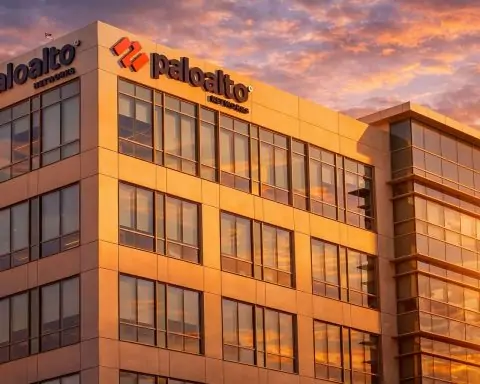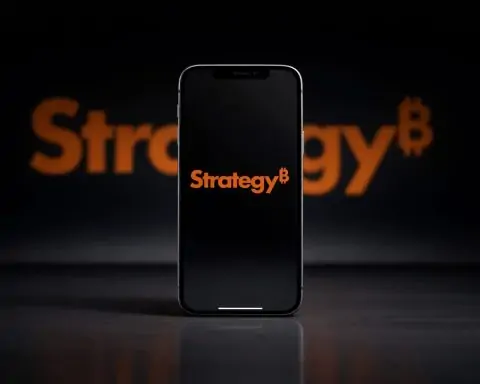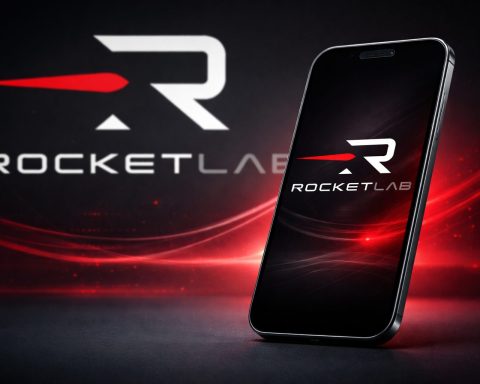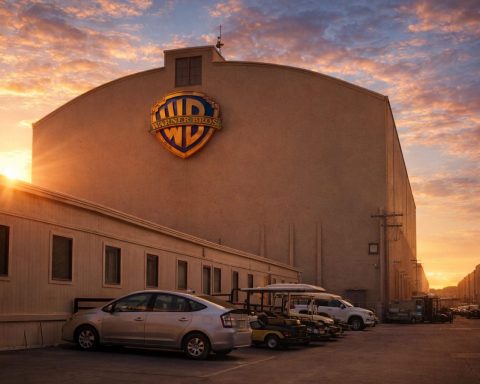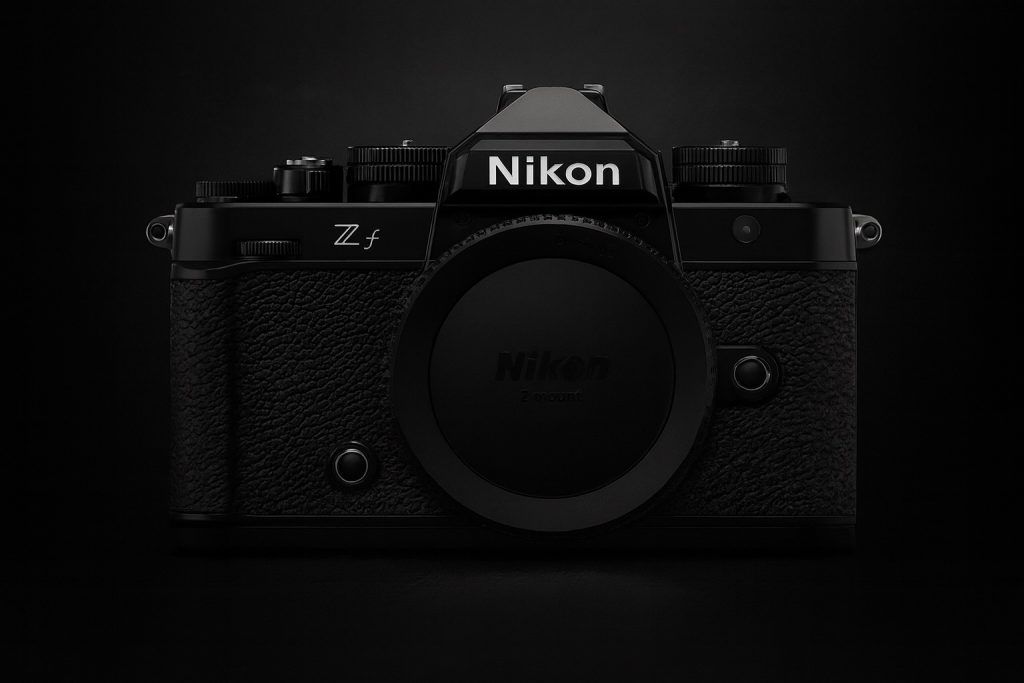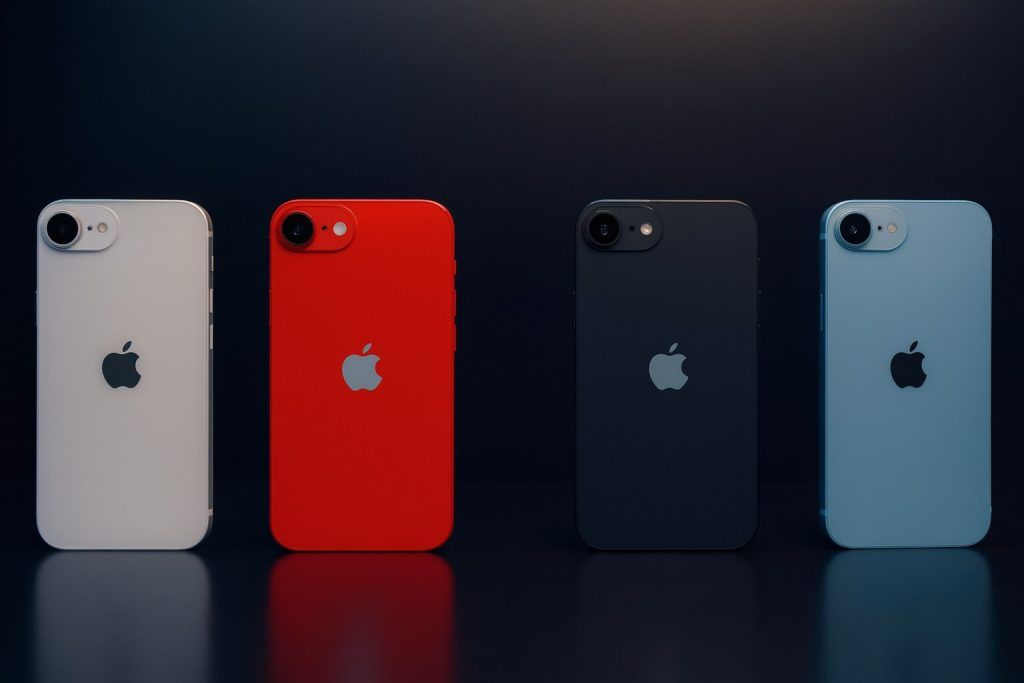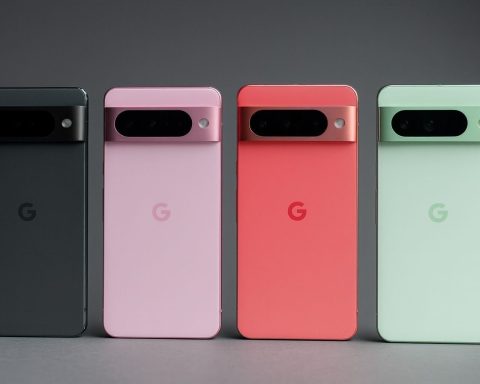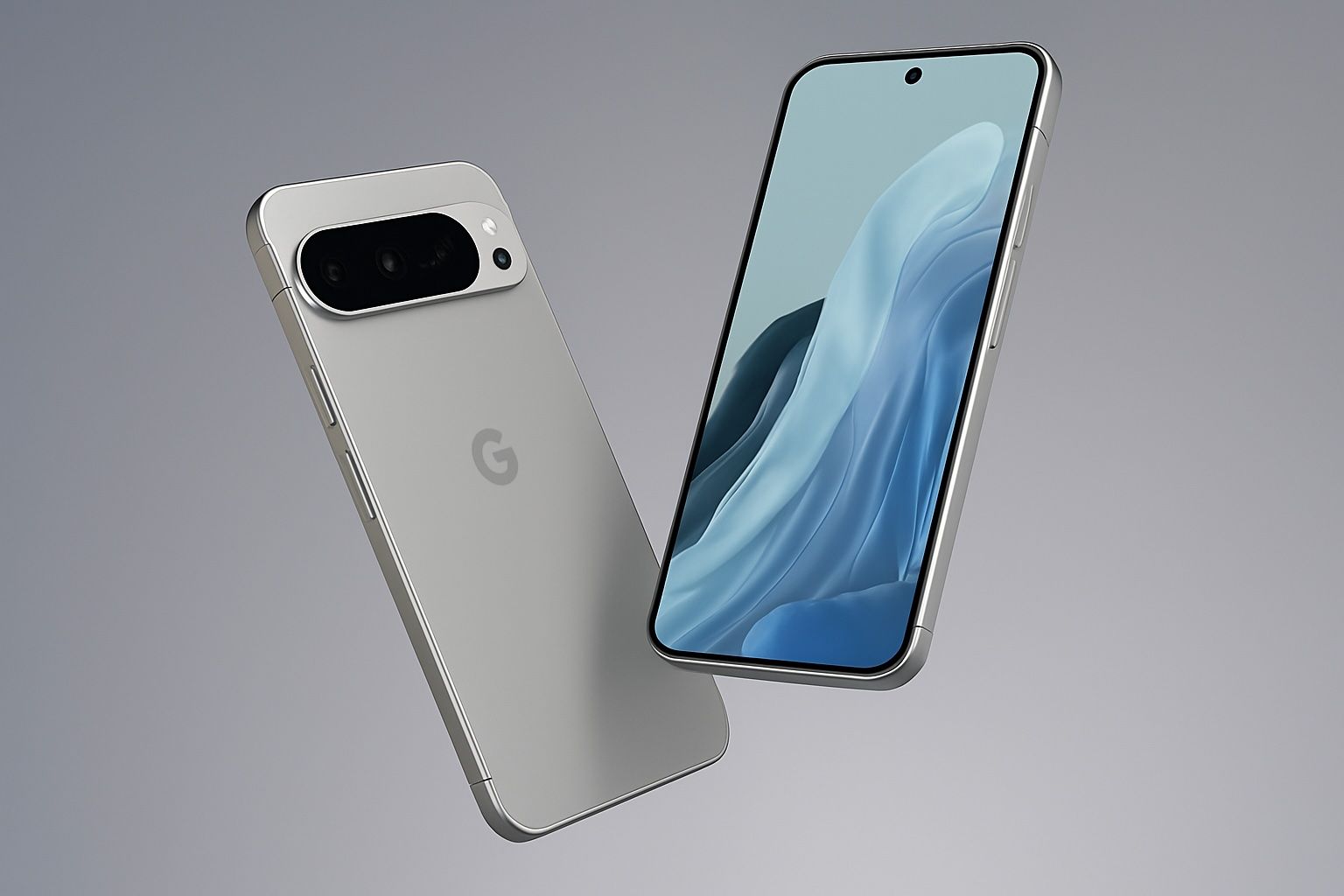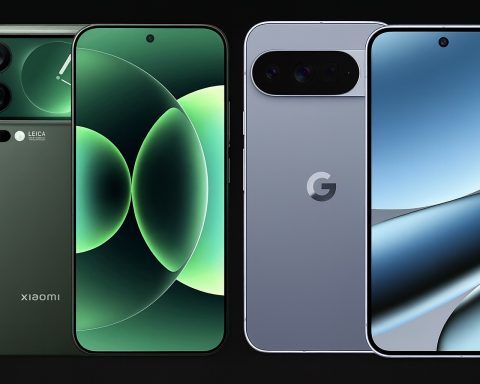- Pixel 5a (2021) runs the Snapdragon 765G, 6 GB RAM, 128 GB storage, a 4680 mAh battery, 18 W charging, and IP67 water resistance.
- Pixel 6a (2022) uses Google Tensor Gen 1, 6 GB RAM, 128 GB storage, a 4410 mAh battery, a 6.1″ OLED at 1080p60, and IP67 with no microSD or 3.5 mm jack.
- Pixel 7a (2023) uses Tensor G2, 8 GB RAM, 128 GB storage, a 4385 mAh battery, a 6.1″ OLED with 90 Hz, 7.5 W wireless charging, and a 64 MP main camera with OIS.
- Pixel 7a’s main camera is a 64 MP Quad-Bayer sensor that is 72% larger than the 6a’s sensor, delivering more light.
- Pixel 5a/6a share a 12.2 MP main camera (Sony IMX363); the 5a has a 16 MP ultrawide, the 6a a 12 MP ultrawide, and neither has a telephoto lens.
- The Pixel 5a uses a 6.34″ 60 Hz OLED, while the 6a and 7a use 6.1″ OLEDs with 60 Hz, and the 7a adds a 90 Hz refresh rate and higher brightness.
- The Pixel 7a adds an aluminum camera bar and a premium feel versus the plastic-backed 5a/6a, with four color options: Charcoal, Snow, Sea, and Coral.
- Pixel 5a launched with Android 11 and received OS updates through Android 14 with patches until August 2024; Pixel 6a/7a now receive 5 years of OS updates (6a to Android 17 in 2026, 7a to Android 18 in 2027) plus 5 years of monthly patches.
- Launch prices were $449 for the 5a and 6a, and $499 for the 7a; by August 2025 the 6a commonly drops to about $349 and the 7a to about $399, while the 5a is discontinued.
- Future models noted include Pixel 8a (May 2024) with a 120 Hz display and Tensor G3, and Pixel 9a (April 2025) with a 48 MP main camera, 2700 nits brightness, and 7 years of updates.
Google’s Pixel “a” series phones are Google’s budget-friendly champions, and in this comprehensive report we pit the Pixel 7a, Pixel 6a, and Pixel 5a against each other. We’ll compare performance, displays, cameras, battery life, build quality, software and more – plus update you on current prices and availability in key markets as of August 2025. We’ll also look ahead at what Google has done with newer models like the Pixel 8a and Pixel 9, and what leaks suggest about the future of Pixel phones. By the end, you’ll know which Pixel “a” phone offers the best overall value in 2025 and whether it’s worth waiting for the next big thing.
Spec Comparison at a Glance
To start, here’s a side-by-side comparison of the core specs for Pixel 5a, 6a, and 7a:
| Feature | Google Pixel 5a (2021) | Google Pixel 6a (2022) | Google Pixel 7a (2023) |
|---|---|---|---|
| Release (OS at launch) | Aug 2021 (Android 11) | July 2022 (Android 12) | May 2023 (Android 13) |
| Chipset (SoC) | Snapdragon 765G 5G [1] (8-core, 2.4 GHz max) | Google Tensor (Gen 1) [2] (8-core, ~2.8 GHz max) | Google Tensor G2 [3] (8-core, ~2.85 GHz max) |
| RAM | 6 GB LPDDR4X [4] [5] | 6 GB LPDDR5 [6] | 8 GB LPDDR5 [7] |
| Storage | 128 GB UFS 2.1 (no microSD) [8] [9] | 128 GB UFS 3.1 (no microSD) [10] | 128 GB UFS 3.1 (no microSD) [11] |
| Display | 6.34″ OLED, FHD+ 1080×2400, ~415 ppi, 60 Hz [12] [13] | 6.1″ OLED, FHD+ 1080×2400, ~429 ppi, 60 Hz [14] | 6.1″ OLED, FHD+ 1080×2400, ~431 ppi, 90 Hz [15] [16] |
| Main Camera | 12.2 MP wide, 1/2.55″ sensor, f/1.7, OIS [17] | 12.2 MP wide, same sensor as 5a [18] (OIS) | 64 MP wide, 1/1.73″ Quad-Bayer sensor, f/1.9, OIS [19] |
| Ultra-Wide Camera | 16 MP, 117° f/2.2 [20] | 12 MP, 114° f/2.2 [21] | 13 MP, 120° f/2.2 [22] |
| Front Camera | 8 MP, f/2.0 (1080p video max) [23] | 8 MP, f/2.0 (1080p video max) [24] | 13 MP, f/2.2 (supports 4K video) [25] |
| Battery | 4680 mAh, 18 W charging [26] [27] (no wireless) | 4410 mAh, 18 W charging, no wireless [28] [29] | 4385 mAh, 18 W charging, wireless charging 7.5 W Qi [30] [31] |
| Build & Design | Aluminum unibody with plastic coating; rear fingerprint; 3.5mm jack; IP67 water resistant [32] [33]. Available in Mostly Black. | Aluminum frame, plastic back; in-display fingerprint; no headphone jack [34]; IP67 rated [35]. Two-tone design (Sage, Chalk, Charcoal colors). | Aluminum frame, plastic back; in-display fingerprint; no headphone jack; IP67 rated [36] [37]. Metal camera bar design (Charcoal, Snow, Sea, Coral colors). |
| OS Updates | 3 years OS (up to Android 14, support ended Aug 2024) [38] | 5 years OS (up to Android 17 in 2026) [39] | 5 years OS (up to Android 18 in 2027) [40] |
| Launch Price (USD) | $449 [41] | $449 [42] | $499 [43] |
Table 1: Key specifications of Google’s Pixel 5a, 6a, and 7a. All three are 5G smartphones with 128 GB storage and similar OLED displays, but note the upgrades in the Pixel 6a and especially Pixel 7a (bolded). Pixel 7a introduced a higher 90 Hz refresh rate, wireless charging, more RAM, and a big camera sensor upgrade [44] [45].
Performance & Processor
Chipset & Speed: Pixel 5a was powered by the Qualcomm Snapdragon 765G, a capable 5G mid-range chip also used in the Pixel 5. Pixel 6a took a huge leap by using Google’s custom Tensor processor – the same chip from the flagship Pixel 6/6 Pro [46]. This jump delivered up to 5× higher performance vs Pixel 5a in some tasks [47]. Google Tensor is a flagship-class 5 nm chip with an 8-core CPU and strong AI/ML cores; reviewers found its CPU and camera processing performance on Pixel 6a “felt indistinguishable from Qualcomm chips,” comparable to a Snapdragon 888, though GPU throttling under sustained load was noted [48]. In the Pixel 7a, Google upgraded to the Tensor G2 (from the Pixel 7 series). Tensor G2 brings modest CPU gains and improved efficiency, along with a stronger GPU and TPU for machine learning. In practice, Pixel 7a’s performance is a slight step up from the 6a and handles any app or game with ease – all while enabling advanced Pixel features like on-device voice dictation and photo processing.
RAM & Storage: All three phones come with 128 GB of fast internal storage (non-expandable). Pixel 5a uses UFS 2.1, while 6a/7a use faster UFS 3.1 storage for quicker app and data loads [49]. The Pixel 5a and 6a each have 6 GB of RAM, sufficient for general multitasking. The Pixel 7a gets a bump to 8 GB RAM [50], allowing more apps to stay in memory – beneficial for heavy multitasking or future-proofing. None of these phones support microSD expansion (a common omission in Pixels).
Thermals: One downside of Google’s Tensor chips (Gen 1 in the 6a, Gen 2 in 7a) is that they run hot under heavy load. Early Pixel 6a reviews noted the device could get unusually warm during gaming or 4K video recording, and would throttle performance during extended stress tests [51]. The Pixel 7a’s Tensor G2 is a bit more power-efficient, but under extreme loads it can still heat up (a trade-off for the powerful AI silicon). By contrast, the Snapdragon 765G in the Pixel 5a was battery-efficient and cooler, though considerably slower. In everyday use (messaging, social media, web browsing), all three phones feel smooth and responsive, but Pixel 7a is the snappiest of the trio, with performance on par with 2022–2023 flagships.
5G & Connectivity: All models support 5G, but the Pixel 5a was limited to sub-6 GHz 5G (no mmWave) and was sold only in the US and Japan [52]. The Pixel 6a and 7a have broader 5G support; unlocked models support sub-6 GHz 5G globally, and there were special variants with mmWave for carriers (e.g. Verizon) at a slightly higher cost [53]. In terms of Wi-Fi, Pixel 5a uses Wi-Fi 5, while 6a supports Wi-Fi 6/6E and Pixel 7a supports the latest Wi-Fi 6E and Bluetooth 5.3 [54] for improved wireless speeds and connectivity. All three have NFC for Google Pay, and all charge via USB-C (Pixel 6a/7a have USB-C 3.1/3.2 ports vs 5a’s USB-C 2.0).
Summary: The Pixel 6a and 7a represent a huge jump in performance over the 5a – the move to Google’s Tensor brought flagship-grade speed and AI smarts, making these mid-range Pixels feel “flagship-level” in performance [55]. Pixel 7a edges out the 6a further with more RAM and the refined Tensor G2. Unless you’re a very heavy user or hardcore mobile gamer, any of these phones can handle typical tasks in 2025, but Pixel 7a will age the best with its extra headroom and extended software support.
Display & Design
Back view of the Google Pixel 6a in Chalk white. Design shift from Pixel 5a to 6a: Google radically redesigned its phones with the Pixel 6 generation, and the mid-range Pixel 6a inherited that fresh look. Pixel 5a, in contrast, followed the older Pixel 5 design language – a unibody chassis (aluminum with a grippy plastic coating) with a traditional rear fingerprint scanner and a small square camera bump. It had fairly thick bezels around a 6.34-inch OLED screen and an old-school 3.5 mm headphone jack on top [56] [57]. The 5a came only in a utilitarian “Mostly Black” color and felt sturdy yet a bit plain. With Pixel 6a, Google introduced the bold new Pixel aesthetic: a camera bar across the back (housing dual cameras) and a two-tone paint job. The Pixel 6a’s frame is aluminum and the back is a polycarbonate (plastic) composite [58], which keeps it lightweight. It looks almost identical to the flagship Pixel 6, even down to the IP67 water resistance rating (the Pixel 5a was also IP67, finally bringing water protection to the “a” series) [59] [60]. One notable loss was the headphone jack – the Pixel 6a was the first “a” model to omit the 3.5 mm jack, a change lamented by some audio enthusiasts [61]. The fingerprint reader moved from the back to under the display (optical sensor) on the 6a. This in-display scanner was convenient but initially had some glitches – a security flaw at launch allowed unregistered fingerprints to unlock some 6a units, which Google patched in a software update [62]. Overall, the Pixel 6a’s design was a refreshing upgrade, making the budget Pixel look just as modern as its pricier siblings.
Google Pixel 7a in Snow white (back view), with Google’s signature camera bar. Pixel 7a refinements: At first glance, the Pixel 7a looks almost the same as the 6a, but there are subtle upgrades. It retains the 6.1-inch screen and overall size, but the back camera bar and side rails are now aluminum with a high-quality matte finish [63] (on the Pixel 6a the camera bar was a plastic strip). This gives the 7a a more premium feel in hand. The Pixel 7a came in four colors – Charcoal (gray-black), Snow (white), Sea (light blue), and an eye-catching Coral – whereas the 6a offered Sage green, Chalk white, or Charcoal. The build is still plastic-backed (to save cost), and durability is solid: like its predecessor, the 7a is IP67 water-resistant (can survive splashes or a dunk up to 1 m) [64]. On the front, all three phones use Gorilla Glass (Victus on the higher-end Pixels, but the 5a/6a/7a use older Gorilla Glass 3). The display tech is where Pixel 7a makes a big leap: it finally features a 90 Hz high-refresh display [65]. Pixel 5a and 6a were stuck at 60 Hz, which by 2022–2023 felt a bit behind the curve (rivals like Samsung’s Galaxy A series had 90 Hz or 120 Hz screens). With the 7a, scrolling and animations become noticeably smoother, bringing it closer to a flagship experience. Reviewers noted this “puts it on better footing” against competing mid-range phones [66]. The screen size and resolution (around 6.1” FHD+) are similar on 6a and 7a – both are vibrant OLED panels, more than sharp enough, with always-on display capability. The Pixel 5a’s display was slightly larger (6.34”) but only 60 Hz and not as bright. In sum, Pixel 7a delivers the most polished display and design of the trio – it’s hard to tell apart from the premium Pixel 7, as Google even added features like a high-refresh display and wireless charging to the 7a to narrow the gap [67].
Size & Weight: All three phones are reasonably compact by modern standards. Pixel 6a/7a actually shrunk a bit from the 5a – the 5a was taller but thinner (154.9 × 73.7 × 7.6 mm) while the 6a/7a measure ~152 × 72 × 8.9 mm [68] [69]. In hand, the 5a feels a tad larger due to the 6.34″ screen, but its slim 7.6 mm thickness and rounded back make it comfortable. The 6a and 7a are slightly thicker (to accommodate the camera bar) and a few grams heavier (≈178 g for 5a vs ~178 g for 6a, ~193 g for 7a). The difference is minor – all are under 200 g and pocket-friendly. Pixel 7a’s build quality is the best: the aluminum frame gives it a rigid, high-end feel, whereas Pixel 5a had more flex (plastic-coated body). One durability note: Pixel 5a had a known issue with motherboard failures leading to dead units, which was common enough that Google offered an extended 2-year repair program for the 5a [70]. Pixel 6a and 7a have had no widespread build failures reported as of 2025, aside from some isolated battery swelling issues on Pixel 7a that Google is addressing with a free battery replacement program [71].
Displays in use: Pixel screens are praised for color accuracy and contrast. The 5a/6a/7a OLEDs all support HDR and have ~1080p resolution (~~ 1080×2400). The Pixel 7a’s display can get brighter than the 6a’s. Google claims the Pixel 7a is 25% brighter than 6a indoors, and the Pixel 8a (more on that later) boosted brightness by 40% over 7a with up to 2000 nits peak [72]. Under direct sunlight, the 7a is a bit easier to view than the 6a/5a, though all struggle compared to high-end phones with very bright panels. Still, for everyday use these OLEDs are punchy and vibrant. The added smoothness of 90 Hz on the Pixel 7a is arguably the biggest quality-of-life upgrade in display tech since the earlier models.
Takeaway: Pixel 5a feels like the last of Google’s “old style” – practical and plain. Pixel 6a and 7a ushered in a modern look that turned heads for a mid-range phone. As The Verge noted at the Pixel 7a’s debut, it’s now “harder than ever to tell the ‘budget’ A-series phone apart from [Google’s] flagship” [73]. All three phones are well-built, but the Pixel 7a looks and feels the most premium, narrowing the gap to high-end devices.
Battery Life & Charging
Battery Capacity: Google packed a large battery in the Pixel 5a – at 4680 mAh, it was one of the biggest batteries in any Pixel phone at the time [74]. The result was excellent endurance: many users could get 1.5 to 2 days on a charge with moderate use. The Pixel 6a has a slightly smaller 4410 mAh battery [75] (Google lists 4306 mAh typical, 4410 mAh rated), and Pixel 7a is similar at 4385 mAh [76]. In practice, Pixel 6a and 7a can still last all day comfortably, but they didn’t quite achieve the battery champ status of the 5a. In fact, some reviewers felt the Pixel 6a’s battery life didn’t live up to Google’s claims – heavy use could drain it within 24 hours, and standby drain was higher than expected, likely due to the Tensor chip’s power hunger [77]. Pixel 7a’s Tensor G2 is a bit more power-efficient and coupled with adaptive software features (like Extreme Battery Saver), it manages all-day use reliably. Google advertises “over 24 hours” on 7a and up to 72 hours with Extreme Battery Saver mode (which limits features) [78] [79]. Real-world use sees around 6–7 hours of screen-on time on 6a/7a – good, though not class-leading. The Pixel 5a, thanks to its efficient Snapdragon chip and 60 Hz screen, could achieve even more screen time (often 8+ hours) and earned a reputation as a “battery life king” in some reviews [80].
Charging Speeds: All three devices are relatively slow to charge by 2025 standards. They support 18 W wired fast charging (USB Power Delivery). In practice, that means around 1.5 hours for a full charge on the Pixel 5a, and slightly more for the 6a/7a due to their >4000 mAh batteries. Google did not increase charging wattage on the “a” series over these generations. There’s no support for super-fast charging like you’d find on some competing mid-range phones (many of which offer 25 W, 30 W, or higher). That said, 18 W is the same charging speed as Google’s flagships up through Pixel 7. Pixel 6a/7a will get to ~50% in about 30 minutes [81], which is decent, but the last 50% fills more slowly.
The game-changer is wireless charging – or lack thereof on the older models. Pixel 5a and 6a do not support wireless charging, a cost-cutting move (Pixel 5a’s metal body also made wireless charging impossible). The Pixel 7a is the first A-series Pixel to support Qi wireless charging [82]. It’s limited to 7.5 W (or up to 7.5 W on a Pixel Stand), so it’s not fast, but it offers the convenience of cable-free top-ups. This is a nice perk; you can drop the 7a on any Qi pad and get a slow trickle charge – good for desks or bedside charging. None of these Pixels have reverse wireless charging (that feature is reserved for Pixel 7/8 Pro).
Battery life in daily use: In day-to-day usage scenarios: Pixel 5a tends to last the longest on a single charge – many owners could go to bed with ~30% left after a day of moderate use. Pixel 6a usually makes it through the day but might be in the red by late night if used heavily (Tensor’s thermals and lack of LTPO screen can sap battery when multitasking or navigating all day). Pixel 7a, despite the higher refresh display, manages about the same daily endurance as 6a, thanks in part to optimizations and that its display can dynamically drop to 60 Hz when static. If you enable 90 Hz constantly, it will consume a bit more power. Notably, Pixel phones have excellent standby efficiency – features like Adaptive Battery and hibernation of unused apps help minimize idle drain. So if you’re a light user, even the 6a/7a can stretch into a second day.
All three models support Google’s “Adaptive Charging,” which preserves battery health by slowly charging overnight to 100% by morning alarm, and “Battery Share” (wireless reverse charge) is not supported on these mid-range models (Pixel 5 and up support it, but Pixel 5a did not include it).
Battery & Charging Highlights: If all-day battery life is your priority, Pixel 5a still holds up with its larger battery and frugal chip – one review even dubbed it a “well-executed battery life king” [83]. The 6a and 7a provide sufficient battery life for most users, but they faced more competition and some criticism for not improving endurance or charging speeds. Google clearly prioritized other upgrades (camera, display, chip) in the 7a rather than a bigger battery. And while we finally got wireless charging on the Pixel 7a (a very welcome addition), none of these phones can match the fast-charge times of certain Chinese-brand mid-rangers. You’ll want to allocate about 90 minutes to fully top up. Looking ahead: Google did address battery and charging in Pixel 9a, which jumps to a 5100 mAh battery and 23 W charging [84] – but more on that in the Future section.
Camera Quality
One of the biggest reasons to choose a Pixel phone has always been the camera. All three of these devices punch above their weight in photography, but there are key hardware differences:
- Pixel 5a and Pixel 6a: These two share essentially the same camera hardware that Google used since Pixel 3/4. The main rear camera is a tried-and-true 12.2 MP Sony IMX363 sensor (1.4 μm pixels, ~1/2.55″ size) with Dual Pixel autofocus and optical stabilization [85]. The ultra-wide camera on 5a is 16 MP (117° FoV) [86], while on 6a it’s 12 MP (114° FoV) [87] – a minor difference; both lack autofocus and serve for wide scenic shots. The front camera on both is 8 MP. Image quality on Pixel 5a/6a is nearly identical: in daylight, photos are excellent – sharp, with Google’s signature contrasty look and HDR+ processing. Thanks to Google’s computational photography, these phones reliably produce output that rivals much more expensive phones of their time. As 9to5Google noted, even though Pixel 6a didn’t get the new 50 MP sensor that came with Pixel 6, its older 12 MP setup is “still one of the best on the market” in this class [88]. Low-light performance is very good with Night Sight mode, though the aging sensor shows some limits in detail and dynamic range compared to newer Pixels. One weakness is zoom – neither phone has a telephoto lens, and the 12 MP base resolution doesn’t allow much digital zoom before things get blurry (Google’s Super Res Zoom helps a bit, but it’s no substitute for optical zoom). Also, the ultrawide sensor on 5a/6a is fairly small, so low-light ultrawide shots are mediocre. Both can record up to 4K 60 fps video on the rear camera. However, the Pixel 5a notably had an overheating issue when recording 4K 60fps – many users found it could only do a few minutes of 4K60 before shutting down to cool off [89]. The Pixel 6a’s Tensor chip handled 4K60 better (no severe overheating reported), but if you plan to shoot a lot of high-res video, these phones are not the very best choice. For casual photos and videos, though, Pixel 5a/6a are outstanding – they beat most budget phones and even some flagships from a couple years ago, especially in tricky lighting. Reviewers gave the 6a “overwhelming praise” for its camera quality and pointed out that the Pixel 5a/6a can “hold their own against much more expensive camera phones” thanks to Google’s software [90] [91].
- Pixel 7a: Here Google finally upgraded the camera hardware significantly. The Pixel 7a’s main camera uses a 64 MP Quad-Bayer sensor (Quad PD technology) with OIS, yielding 16 MP images by default [92]. Importantly, this sensor is 72% larger than the one in the 6a, capturing 44% more light according to Google [93]. In plain terms, Pixel 7a can gather more light for improved low-light performance and dynamic range. Its photos show more detail than the 6a’s, especially in low-light or high-contrast scenes. Night Sight on the 7a is not only clearer but also twice as fast as on the 6a [94] – meaning you wait less time for night shots to expose. The ultrawide on 7a is 13 MP (same as Pixel 6/7 series) with a slightly wider 120° field of view [95], and the front camera is also 13 MP, up from 8 MP. One perk: the front camera on Pixel 7a can record 4K video (the 5a/6a’s selfie cams are limited to 1080p). Overall, the Pixel 7a’s camera quality is a step up – day shots are excellent as expected, but in low light you’ll notice sharper, brighter results. The color and exposure tuning is consistent with the Pixel lineage (natural colors, strong contrast). With the Tensor G2’s improved image processor, the Pixel 7a also gets the latest software tricks: Long Exposure mode (for creative motion blur shots) and Face Unblur, Magic Eraser, etc., all present. The Verge called the Pixel 7a “the most well-rounded A-series Pixel camera yet” [96]. Its only limitation is again the lack of a telephoto lens – so while it can do up to ~8× digital zoom with Super Res algorithms, it won’t match an optical zoom lens for distant subjects. Still, the bump to a high-res main sensor means even cropped images are a bit more usable now. In video, Pixel 7a performs well: stabilized 4K footage looks great, and it supports 4K @ 60 fps on rear and 4K @ 30 fps on front. The larger sensor also improves video low-light performance slightly.
In summary, casual photographers will be happy with any of these phones – they all share Google’s class-leading computational photography. But the Pixel 7a is clearly the best shooter of the trio. It can capture shots that the older 12 MP sensor might miss (for example, sharper details in a dim indoor scene, or faster Night Sight of a cityscape without blurring). If you compare side by side, Pixel 7a’s images have an edge in clarity and dynamic range. The Pixel 6a is not far behind in good light, but in challenging conditions the gap widens. Pixel 5a, using essentially the same camera as 6a, still holds up very well for a 2021 phone – but it lacks some of the newer shooting modes (like Long Exposure or Photo Unblur) that came with later Pixels.
Expert and User Feedback: The camera prowess of these phones has been acknowledged widely. Android reviewers often say “if you want the best camera under $500, buy a Pixel.” The Pixel 6a was lauded as offering “pretty much the most reliable point-and-shoot cameras” in its class [97]. The Pixel 7a, upon release, even closed the gap with flagships – The New York Times tech reviewer wrote that with phones like the 7a, “we’re running out of reasons to splurge on a ‘Pro’ phone” [98], since the camera and core experience are so good for the price. That sentiment might be a bit hyperbolic, but it underscores just how impressive the Pixel 7a’s camera is in the mid-range segment.
Finally, it’s worth noting all these Pixels benefit from Google’s steady stream of camera software updates and feature drops. For instance, Astrophotography mode (for capturing the stars) is available on all three when on a tripod, and Real Tone ensures accurate skin tones across diverse subjects. Google’s image processing has a distinctive look that many love – shadows are lifted, skies are dramatic, and photos are social-media ready. If photography is high on your list, the Pixel 7a is the obvious winner among the three, but Pixel 5a/6a still outshoot a lot of 2025’s budget phones from other brands.
Software Experience & Updates
All three phones offer Google’s clean Android experience with Pixel-exclusive features. Out of the box, each launched with a different Android version (Pixel 5a on Android 11, 6a on Android 12, 7a on Android 13), but they have since been updated. Here’s how they stand:
- Pixel 5a: Launched with Android 11 in 2021 and officially received OS updates through Android 14 (released late 2023) [99]. Google provided 3 years of Android version upgrades for the 5a, meaning Android 14 was the last major update. Security patches were guaranteed until August 2024 [100] – and indeed Google dropped support thereafter. As of August 2025, the Pixel 5a runs Android 14 and is no longer receiving monthly security updates (so it’s effectively at end-of-life in software). It still works fine, of course, but going forward it won’t get Android 15 or any new features. Notably, Pixel 5a was not eligible for the extended update policy Google announced later for newer Pixels. It was also the last Pixel to include the older Unlimited Google Photos storage perk (though only at a compressed quality) – however, Google ended that policy for Pixels with the 5a [101].
- Pixel 6a & 7a: These fall under Google’s newer support commitments. Originally, Pixel 6a/7a were slated for 3 years of OS updates (to Android 15 and 16 respectively) and 5 years of security patches. However, in late 2024 Google quietly extended the support lifecycle for Pixel 6 and 7 series (including 6a/7a) to 5 years of full OS updates [102] [103]. This was a huge boost – it means Pixel 6a and 7a will keep getting new Android versions beyond what was first promised. Specifically, Pixel 6a (launched with Android 12) can now expect updates through Android 17 in 2026 [104], and Pixel 7a (launched with Android 13) through Android 18 in 2027 [105]. Google also provides 5 years of monthly security patches, so 6a is covered until mid-2027 and 7a till 2028. This level of support is class-leading in Android – a mid-range Pixel 7a bought in 2023 will get the same number of Android upgrades as an iPhone would, which is a rarity. It reflects Google’s confidence in their Tensor-powered devices (and possibly a response to Samsung offering 4 OS updates on some phones). As a result, Pixel 6a/7a are very “future-proof”. They’ll continue to receive new features via Pixel Drops, bug fixes, and the latest Android versions for years. For example, both 6a and 7a will get Android 15 (2024) and several beyond. Indeed, an update in December 2024 brought some Pixel 8 software features to the 6a/7a, and enabled new tricks like the “Circle” Quick Search gesture via camera for those models [106].
In terms of UI and features, all three run stock-like Android with Pixel’s exclusive touches: the Google Assistant call screening, Now Playing music ID on the lockscreen, Recorder with transcript, Live Translate, etc. Pixel 5a had features like Call Screen and the Personal Safety app at launch [107], and those have only expanded on 6a/7a. The Pixel 7a, with Tensor G2, also enables Google’s latest AI features like Clear Calling (noise reduction on calls) and the full suite of Assistant voice typing, etc., similar to the flagship Pixel 7 [108]. Additionally, Pixel 7a introduced built-in Face Unlock (leveraging the front camera) – something Pixel 6a and 5a don’t offer. Pixel 7a’s face unlock is convenience-oriented (not as secure as Pixel 7 Pro’s Face ID-like system, but handy for quick unlocks).
Another aspect is that Pixel 7a, being newer, will get longer support for third-party app updates and new network features (for example, it has the infrastructure for Bluetooth LE Audio and other new standards that older chips may not fully support). Pixel 6a, with the Tensor G1, still gets most new Pixel Feature Drop goodies – e.g., in June 2023 it got the car crash detection feature and in March 2024 it got “Camera Timer light” and other Pixel Drop features simultaneously with newer Pixels.
Software stability on Pixels has had ups and downs: early Pixel 6 series software was a bit buggy, but by 2023 Google ironed out most issues. Pixel 6a and 7a now run Android 14 (as of 2025) smoothly. Users enjoy day-one updates; Pixel owners are among the first to receive new Android versions each year (Android 14 came to Pixel 6a/7a in Oct 2023, Android 15 will likely hit them in late 2024, etc.).
In short, Pixel software experience is clean, fast, and getting better with age on these phones. You won’t find the bloatware or heavy skins that some other mid-range phones have. And with the extended support, Pixel 6a and 7a are a safe long-term investment. Pixel 5a owners unfortunately are at the end of the line for updates – if you have one now, you’ll still get the Pixel Launcher and all existing features, but you might miss out on 2025’s Android 15 and beyond (unless you venture into custom ROMs).
It’s also worth noting that Google extended the Pixel 5a’s warranty for a known hardware issue (the motherboard failure) to 2 years [109], but that’s separate from software. In terms of security, Pixel 6a/7a will continue to receive monthly patches which is important for privacy and security. Pixel 5a without new patches after 2024 will gradually become less secure over time.
Bottom line: Pixel 7a offers the longest and most robust software support, plus it launched with the latest Android and will see features the longest. Pixel 6a isn’t far behind thanks to Google’s policy change, making it still a good choice in 2025 with fresh software. Pixel 5a, while still running a modern OS (Android 14), is sunsetted – keep that in mind if you’re considering one now.
Pricing, Availability & Value
One of the biggest draws of the Pixel “a” series is the value for money. Let’s compare launch prices and current pricing:
| Model | Launch Price (USA) | Launch Price (UK) | Launch Price (India) |
|---|---|---|---|
| Pixel 5a (6GB/128GB) | $449 USD [110] | Not officially sold (N/A) | Not officially sold |
| Pixel 6a (6GB/128GB) | $449 USD [111] | £399 GBP [112] | ₹43,999 INR (Flipkart) [113] |
| Pixel 7a (8GB/128GB) | $499 USD [114] | £449 GBP [115] | ₹43,999 INR (launch offer ~₹39,999) [116] |
Table 2: Original launch prices of Pixel 5a, 6a, 7a in major markets. (Pixel 5a was only released in the U.S. and Japan [117], skipping Europe and India. Pixel 6a and 7a had broader availability globally.)
When they launched, each of these phones was positioned as affordable alternatives to $700–$900 flagships. Pixel 5a at $449 undercut the Pixel 5 ($699) by offering the same camera and a bigger battery for much less. The Pixel 6a again launched at $449 – a great deal, as it delivered the flagship Tensor chip and similar Pixel 6 design at roughly half the price of top-tier phones. Pixel 7a came in $50 higher, at $499, reflecting its added features (90 Hz display, wireless charging, better cameras). In the UK, the Pixel 7a saw a price hike to £449 (versus £399 for 6a) [118], which some found a tough pill – but it’s still considered good value given the upgrades. In India, Google priced both 6a and 7a around ₹43k (with launch discounts bringing 7a to ~₹39,999) [119], which is on the higher side for India’s mid-range market, yet they still attracted enthusiasts due to the Pixel brand and camera prowess.
Current Pricing (August 2025): As newer models have arrived, Pixel 6a and 7a have seen significant price cuts:
- Pixel 6a – After the Pixel 7a was revealed in May 2023, Google permanently dropped the Pixel 6a’s price to $349 in the US (and £349 in the UK) [120]. It’s often found even cheaper during sales – for instance, Amazon and retailers have sold it for ~$299 in the US [121]. In India, the Pixel 6a, which was ₹43,999 at launch, has fallen to around ₹27,000 on Flipkart (and sometimes as low as ₹25k with bank offers) [122] [123]. At ~$300, the Pixel 6a is arguably one of the best bargains for a good camera phone even in 2025, if you don’t mind that it’s a generation old.
- Pixel 7a – With the Pixel 8a and Pixel 9a now on scene in 2024–25, the Pixel 7a is seeing discounts too. Its official price remains $499, but it’s “readily available at most retailers” and often sees great price cuts now that it’s the outgoing model [124]. By late 2024 it was on sale for ~$429 in the US [125], and as of mid-2025 you can frequently find it around $399 on sale. In the UK, the 7a has been promoted for around £379–£399 during seasonal sales. In India, the Pixel 7a’s price plummeted in mid-2025 – reports mention it going for ₹27,999 (and even ₹24,999 with bank discounts) during special sales [126] [127]. These cuts make the 7a extremely competitive. Remember, the Pixel 7a is still officially sold and supported – but Google tends to stop manufacturing the previous model once the new “a” launches, so it may go out of stock later in 2025.
- Pixel 5a – This model was discontinued long ago (Google only sold it directly for about a year). It’s hard to find new in box now. Third-party sellers or used markets like Swappa have it around $150–$200 in the US [128]. In Japan, it saw clearance sales in 2022 and some might find it second-hand in the ¥20,000–¥30,000 range. However, given the Pixel 5a’s lack of warranty now and no official updates, its value is mainly if you specifically need a budget phone with a headphone jack or want it for collector’s sake. Most buyers in 2025 would be better served spending a bit more for a Pixel 6a instead.
Availability: Pixel 5a, as noted, had limited release (US and Japan only) and is now officially off the market. Pixel 6a is technically still available new in some stores (and will get support until 2027), but Google’s store and carriers have mostly shifted to pushing 7a/8a. Pixel 7a was widely released (including markets like Europe, India, etc.) and as of Aug 2025, you can still buy one, though Google’s store may list it as out of stock or discontinued in favor of newer models. It’s widely available through third-party sellers while inventory lasts. Importantly, all these Pixels are sold unlocked and work with most carriers (the US models also have eSIM support).
When considering overall value: The Pixel 6a was called “the best deal in Android” by many reviewers in 2022, given it delivered a flagship chip and camera under $450. The Pixel 7a, despite costing a bit more, still offers tremendous value – Tom’s Guide noted that at $499 it’s still much cheaper than a flagship Pixel 7 ($599) while sharing most of its features [129]. With just $100 difference at launch, some debated whether to stretch to a Pixel 7, but as Tom’s Guide put it, “with just $100 between them, it could be easy to justify the extra expense for a phone that will get updates a year longer” [130] – and indeed the 7a does get updates longer than the Pixel 7 (thanks to the policy change). Now that Pixel 7a itself can be found at ~$400, it stands out as a top recommendation in the mid-range. TechRadar even headlined that the Pixel 7a was “a real bargain” and “Google’s latest mid-range device offers fantastic bang for the buck” [131].
Longevity vs Price: One way to gauge value is how long the phone will serve you. Pixel 5a, at $200 used, is super cheap but only supported through 2024 (and its warranty period is over). Pixel 6a around $300 has updates for two more Android versions and a couple years security – a solid value proposition. Pixel 7a around $400–$450 now has updates through 2027–28, meaning about 3+ years of new features. If your budget allows, spending the extra for the 7a might be worthwhile for the longer lifespan and better specs. That said, if you find a Pixel 6a at $249–$299, it’s arguably the budget steal of the year, as it still outperforms most $300 phones in camera and performance [132].
Lastly, consider trade-in and carrier deals: In the US, carriers sometimes offer the Pixel 6a or 7a for free or very low cost on contract. By 2025, you might see promotions practically giving away the 6a to clear stock, or bundling the 7a at heavy discount with a plan. Google Fi (Google’s own carrier) has also run deals – e.g., $249 for Pixel 7a with service. These deals enhance the value if you’re okay with carrier commitments.
In conclusion, all three Pixels provided excellent value at launch, and their value proposition has only grown with price drops. The Pixel 6a and 7a in particular deliver a level of performance and camera quality that’s hard to find under $500 from any other brand. The Pixel 7a is the better long-term buy, but the Pixel 6a at its reduced price is a budget champ. As one reviewer summarized for the Pixel 6a: “Which Android phone should I buy? This one.” [133] – that speaks volumes about how Google hit the value sweet spot with the A-series.
Future Outlook: Pixel 8a, Pixel 9, and Beyond
Google hasn’t slowed down – after the 7a, we’ve seen the Pixel 8a launch in 2024 and the flagship Pixel 9 series in late 2024, with a Pixel 9a in 2025. Here’s a brief on what came next and what to expect:
- Pixel 8a (2024): Debuted in May 2024 (at Google I/O), the Pixel 8a shows Google doubling down on improvements. It kept the same $499 launch price (128 GB) in the US, though it was priced higher in some regions (e.g. £499 in the UK) [134]. What’s new? The Pixel 8a features a 6.1-inch Actua OLED display that is adaptive up to 120 Hz [135] – a notable upgrade from 7a’s 90 Hz. It’s also a much brighter screen (up to 2000 nits peak, 1400 nits HDR brightness), roughly 40% brighter than the Pixel 7a’s display [136], aiding outdoor visibility. The design got refined with slightly more rounded corners and flat sides (mirroring Pixel 8’s look) [137]. Interestingly, Pixel 8a has Gorilla Glass 3 on both front and back with an aluminum frame [138] – yes, a glass back on an A-series! This gives it a more premium hand-feel (whereas 7a was plastic-backed). Internally, it’s powered by the Tensor G3 chip (same as Pixel 8/8 Pro), bringing generative AI features and faster performance [139]. RAM stays 8 GB, and for the first time there’s an option for 256 GB storage on an A-series (with 128 GB base) [140]. The cameras on Pixel 8a carry over the 7a’s hardware – 64 MP main, 13 MP ultrawide, 13 MP front [141] [142] – so image quality is similar, though Tensor G3’s improved ISP and Google’s software refinements (like Best Take and Audio Magic Eraser) add value [143] [144]. Battery got a minor bump to 4492 mAh and still about “24+ hours” use [145]. Charging remains 18 W wired, 7.5 W wireless (no speed increase) [146]. A big highlight: Pixel 8a, like the Pixel 8 flagships, comes with 7 years of software updates – it will get OS and security updates until 2031 [147]. This is virtually unheard of in Android devices and shows Google’s commitment. In essence, Pixel 8a narrowed the gap further with features like a 120 Hz display and the latest chip. Reviews have called it an iterative but solid update – not a must-upgrade from 7a, but an even better value for new buyers.
- Pixel 9 and 9a (2024–2025): Google surprised everyone by launching the Pixel 9 series earlier than usual – announced in August 2024 (instead of the usual October) [148]. The Pixel 9, 9 Pro, and a new 9 Pro XL came out with a refreshed design (flat edges, a slim oval camera visor instead of the full-width bar) [149] [150]. They are powered by the Tensor G4 chip (codenamed “Gemini”) and heavily emphasize on-device AI features [151]. For the mid-range crowd, the interesting development was the Pixel 9a, which Google announced in March 2025 and released in April 2025 [152] [153]. Google moved the 9a launch up a bit (compared to previous years’ May timing) to create more separation from the upcoming Pixel 10 flagships and to avoid the holiday rush with Apple/Samsung [154]. The Pixel 9a launched at $499 for 128 GB (and $599 for a 256 GB model) – same base price as 7a/8a [155]. What does Pixel 9a bring? It actually represents one of the biggest jumps in the A-series: it adopts the Pixel 9’s Tensor G4 chipset and matches many flagship specs. The display grew to 6.3 inches (now the same size as the Pixel 9 screen) [156], and it’s a 120 Hz OLED (60–120 Hz adaptive) just like 8a, but even brighter – Pixel 9a boasts 2700 nits peak brightness, matching the Pixel 9 and about 35% brighter than Pixel 8a [157]. Design-wise, the Pixel 9a drops the camera bar entirely: it has a new pill-shaped dual camera module in the corner, which sits almost flush with the back [158]. This is a significant design departure aimed at making the phone sleeker (and perhaps to cut costs of that heavy aluminum bar). The sides are flat, following the Pixel 9’s iPhone-esque flat frame style [159]. Build materials haven’t been explicitly detailed by Google, but it retains an IP68 water resistance rating [160] – notably an upgrade from IP67 on all previous A-series. Under the hood, Pixel 9a has 8 GB RAM and either 128 or 256 GB UFS 3.1 storage (no UFS 4.0 on the A-series yet) [161]. It ships with Android 15 (since Android 15 is launching fall 2024, Pixel 9a comes with it in 2025) and will of course get 7 years of updates, through Android 22(!) in 2031 [162]. The battery is huge – 5,100 mAh – about 13% bigger than Pixel 8a’s battery [163] [164]. Combined with the efficient Tensor G4, Google advertises “30+ hour” battery life and up to 100 hours with Extreme Saver on Pixel 9a [165]. Charging also improved: Pixel 9a supports 23 W wired fast charging (vs 18 W prior) [166], so it fills up quicker, though it still lags some competitors that offer 30+ W. Wireless charging remains 7.5 W standard Qi. The camera system on Pixel 9a might sound like a downgrade on paper, but it’s actually a strategic change: it has a 48 MP main camera (likely the same sensor used in Pixel 9 Pro Fold) and a 13 MP ultrawide [167] [168]. Google swapped out the 64 MP unit from 7a/8a for a 48 MP sensor that is physically larger. This larger sensor can capture more light, and in fact Google enabled advanced modes: Pixel 9a supports Astrophotography and a new Macro Focus (using the ultrawide for close-ups with AI assistance) [169]. So, while 48 vs 64 MP seems like less, the pixel size and quality are improved – meaning better low-light and detail than 8a. Early analysis suggests Pixel 9a’s camera is very close to the Pixel 9’s in quality, minus the 9 Pro’s telephoto. Indeed, leaks indicated the Pixel 10 (future flagship) might even use the Pixel 9a’s camera system for the base model because it’s so competent [170]. All told, Pixel 9a is a powerhouse for a mid-range phone: it’s nearly a Pixel 9 in a slightly cheaper build. It undercuts rivals like Samsung’s Galaxy A series and Apple’s new iPhone SE (iPhone 16 “e” model) by being priced a full $100 lower than Apple’s $599 offering [171].
- Pixel 10 (upcoming late 2025): While not asked, it’s worth a quick mention: rumors suggest Google will continue its August launch schedule with Pixel 10 in late August 2025 [172]. The Pixel 10 is expected to introduce a Tensor G5 and perhaps some camera reshuffle (some leaks say the base Pixel 10 might use a similar 48 MP main sensor as the 9a to further differentiate from Pro models) [173]. Also exciting is talk of MagSafe-like magnetic wireless charging (“Pixel Snap”) on Pixel 10 series [174], and possibly dropping physical SIM tray in the US models [175]. But those are future flagships; as for the “a” series, if Google continues the pattern, a Pixel 10a would follow in 2026.
Value of Newer Models: The Pixel 8a and 9a show Google is serious about trickling down premium features. Pixel 8a gave us a 120 Hz display and kept the excellent camera, and Pixel 9a has basically redefined the upper-midrange, offering a flagship-sized display, battery, and chip at $499. For consumers, that means if you’re using a Pixel 6a or older, the newer “a” models bring substantial upgrades. However, the competition is heating up too – e.g., Samsung’s Galaxy A54/A56, and Apple’s expected iPhone SE4 (a.k.a iPhone 16e) which came in 2025 at $599. Still, Google seems to be hitting a stride where their mid-range phone “offers premium features at a reasonable price” [176], staying true to the A-series mission.
In the end, the Google Pixel 7a, 6a, and 5a each served as the go-to recommendation for an affordable smartphone in their respective years. As of 2025, the Pixel 7a stands tall as a compelling option with very few compromises – it’s so good that even some die-hard flagship users admit it covers all their needs. The Pixel 6a remains an awesome budget pick if cost is crucial, and the Pixel 5a, while aging, still has its merits (especially that battery life and headphone jack) for a tech-savvy buyer who doesn’t mind tinkering. With the Pixel 8a and Pixel 9a, Google is raising the bar even higher for the mid-tier. Bottom line: You can’t go wrong with a Pixel “a” phone if you value camera quality, clean Android, and long-term updates on a budget – just choose the model that fits your budget, knowing that each newer generation brings meaningful improvements to the table [177] [178].
Sources: Google & manufacturer spec sheets; reviews by Ars Technica, The Verge, Tom’s Guide, Android Authority; Google I/O product announcements; Android Update bulletins and support policy news [179] [180] [181] [182] [183], among others. This report includes information current as of August 2025. Enjoy your Pixel shopping!
References
1. en.wikipedia.org, 2. 9to5google.com, 3. www.theverge.com, 4. en.wikipedia.org, 5. en.wikipedia.org, 6. 9to5google.com, 7. en.wikipedia.org, 8. en.wikipedia.org, 9. en.wikipedia.org, 10. 9to5google.com, 11. en.wikipedia.org, 12. en.wikipedia.org, 13. en.wikipedia.org, 14. 9to5google.com, 15. en.wikipedia.org, 16. www.theverge.com, 17. en.wikipedia.org, 18. en.wikipedia.org, 19. www.theverge.com, 20. en.wikipedia.org, 21. en.wikipedia.org, 22. en.wikipedia.org, 23. en.wikipedia.org, 24. en.wikipedia.org, 25. en.wikipedia.org, 26. en.wikipedia.org, 27. en.wikipedia.org, 28. en.wikipedia.org, 29. 9to5google.com, 30. en.wikipedia.org, 31. www.theverge.com, 32. en.wikipedia.org, 33. en.wikipedia.org, 34. 9to5google.com, 35. en.wikipedia.org, 36. en.wikipedia.org, 37. www.theverge.com, 38. en.wikipedia.org, 39. www.thurrott.com, 40. en.wikipedia.org, 41. en.wikipedia.org, 42. www.tomsguide.com, 43. www.tomsguide.com, 44. www.theverge.com, 45. www.theverge.com, 46. 9to5google.com, 47. 9to5google.com, 48. 9to5google.com, 49. 9to5google.com, 50. en.wikipedia.org, 51. en.wikipedia.org, 52. en.wikipedia.org, 53. www.theverge.com, 54. en.wikipedia.org, 55. en.wikipedia.org, 56. en.wikipedia.org, 57. en.wikipedia.org, 58. en.wikipedia.org, 59. en.wikipedia.org, 60. en.wikipedia.org, 61. 9to5google.com, 62. en.wikipedia.org, 63. www.theverge.com, 64. www.theverge.com, 65. www.theverge.com, 66. www.theverge.com, 67. www.theverge.com, 68. www.phonearena.com, 69. www.phonearena.com, 70. en.wikipedia.org, 71. www.amazon.com, 72. www.phonearena.com, 73. www.theverge.com, 74. en.wikipedia.org, 75. en.wikipedia.org, 76. en.wikipedia.org, 77. en.wikipedia.org, 78. fi.google.com, 79. fi.google.com, 80. hothardware.com, 81. support.google.com, 82. www.theverge.com, 83. hothardware.com, 84. www.tomsguide.com, 85. en.wikipedia.org, 86. en.wikipedia.org, 87. en.wikipedia.org, 88. 9to5google.com, 89. en.wikipedia.org, 90. www.tomsguide.com, 91. 9to5google.com, 92. en.wikipedia.org, 93. www.theverge.com, 94. www.theverge.com, 95. en.wikipedia.org, 96. www.theverge.com, 97. www.reddit.com, 98. en.wikipedia.org, 99. en.wikipedia.org, 100. en.wikipedia.org, 101. en.wikipedia.org, 102. www.thurrott.com, 103. www.thurrott.com, 104. www.thurrott.com, 105. en.wikipedia.org, 106. en.wikipedia.org, 107. en.wikipedia.org, 108. www.phonearena.com, 109. en.wikipedia.org, 110. en.wikipedia.org, 111. www.tomsguide.com, 112. www.tomsguide.com, 113. blog.google, 114. www.tomsguide.com, 115. www.tomsguide.com, 116. blog.google, 117. en.wikipedia.org, 118. www.tomsguide.com, 119. blog.google, 120. www.notebookcheck.net, 121. www.notebookcheck.net, 122. www.gadgets360.com, 123. timesofindia.indiatimes.com, 124. www.techradar.com, 125. www.techradar.com, 126. tech.hindustantimes.com, 127. www.91mobiles.com, 128. swappa.com, 129. www.tomsguide.com, 130. www.tomsguide.com, 131. www.techradar.com, 132. en.wikipedia.org, 133. en.wikipedia.org, 134. www.techradar.com, 135. www.phonearena.com, 136. www.phonearena.com, 137. www.phonearena.com, 138. www.phonearena.com, 139. www.phonearena.com, 140. www.phonearena.com, 141. www.phonearena.com, 142. www.phonearena.com, 143. www.phonearena.com, 144. www.phonearena.com, 145. www.phonearena.com, 146. www.phonearena.com, 147. www.phonearena.com, 148. en.wikipedia.org, 149. en.wikipedia.org, 150. www.tomsguide.com, 151. en.wikipedia.org, 152. ghostek.com, 153. ghostek.com, 154. ghostek.com, 155. ghostek.com, 156. ghostek.com, 157. ghostek.com, 158. www.tomsguide.com, 159. www.tomsguide.com, 160. www.tomsguide.com, 161. www.phonearena.com, 162. www.thurrott.com, 163. ghostek.com, 164. www.tomsguide.com, 165. ghostek.com, 166. www.tomsguide.com, 167. www.tomsguide.com, 168. www.tomsguide.com, 169. www.tomsguide.com, 170. 9to5google.com, 171. www.tomsguide.com, 172. www.tomsguide.com, 173. 9to5google.com, 174. 9to5google.com, 175. 9to5google.com, 176. www.tomsguide.com, 177. www.theverge.com, 178. www.theverge.com, 179. en.wikipedia.org, 180. www.theverge.com, 181. www.thurrott.com, 182. www.notebookcheck.net, 183. www.tomsguide.com

